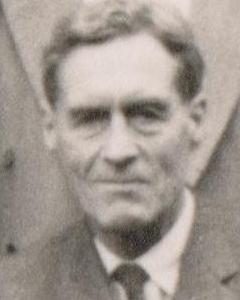Patrick Blackett (1897-1974) was an accomplished British scientist who won the Nobel Prize in Physics in 1948.
Early Years
Patrick Maynard Stuart Blackett was born in Kensington, London on November 18th, 1897. He entered the Osborne Royal Naval College in 1910, and transferred to the Dartmouth Royal Naval College two years later. Before he earned his degree, though, World War I broke out, and Blackett was sent off to fight. He saw combat at the Battle of Falkland Islands in 1914 and the Battle of Jutland in 1916, emerging from the war as a lieutenant.
When the war concluded, the British Admiralty sent Blackett to Cambridge to complete his studies. Enjoying his studies at Cambridge immensely, Blackett decided to resign from the Royal Navy and focus solely upon studying mathematics and sub-atomic physics at Cambridge. Two years later, he completed his undergraduate degree and stayed on at the university as a Bye-Fellow studying under Ernest Rutherford at the Cavendish Laboratory. After completing this fellowship, Blackett became a fellow at King’s College, where he would remain until 1933.
While conducting research at Cambridge, it is believed that a young, distraught graduate student named J. Robert Oppenheimer attempted to poison Blackett with an apple laced with toxic chemicals. Blackett was Oppenheimber’s head tutor at the time, and Oppenheimer found Blackett to be brilliant but also extremely demanding. Blackett insisted that Oppenheimer spend more time doing lab work while Oppenheimer believed his time and talents should be devoted to theoretical physics. Eventually, the stress of graduate work led Oppenheimer to seek psychiatric help, and it was around this time that he allegedly presented his tutor with the toxic apple. Blackett did not eat the apple, and the whole scandal became muddied by conflicting stories. Ultimately, little came of the attempted poisoning. Both Blackett and Oppenheimer would become renowned physicists in their own scientific spheres.
Blackett gained academic recognition in 1924 with his work related to photographic capture of alpha particles interacting with nitrogen molecules. In March of that year, Blackett married Constanza Bayon. The two would eventually have two children: a daughter, Giovanna, and a son, Nicolas. In 1925, Blackett published results of his experiments in which he bombarded nitrogen atoms with alpha particles to create oxygen, becoming the first person to deliberately transmute one element into another.
Throughout the 1930s, Blackett worked with an Italian physicist named Giuseppe P. S. Occhialini on a variety of sub-atomic experiments. Together, these two physicists played an integral role in understanding the properties of the newly discovered particle, the positron.
Following his departure from King’s College in 1933, Blackett moved to Birkbeck College in London to head the physics department and run his own laboratory. Four years later, he moved to Manchester University where he occupied the physics chair.
World War II and After
Blackett became deeply involved in the war effort in 1940. He joined the Instrument Section of the Royal Aircraft Establishment, advised Royal Air Force officials, and established a research group dedicated to the improvement of British anti U-boat operations.
Despite his involvement in British military research, after the war Blackett expressed misgivings over military exploitation of science—especially as it related to saturation bombings against Germany and the employment of atomic weapons. He published a book titled The Military and Political Consequences of Atomic Energy in 1948 which was revised and sold in the U.S. as Fear, War and the Bomb in 1949. Also, in 1948, Blackett received the Nobel Prize in physics for “for his development of the Wilson cloud chamber method, and his discoveries therewith in the fields of nuclear physics and cosmic radiation.” This machine allowed scientists to visualize the passage of ionizing radiation.
Blackett remained academically active throughout the 1950s. At Manchester he delved into the mechanisms underlying the Earth’s magnetic forces and continental drift. Alfred Wegener’s concept of continental drift, hypothesized in 1912, had largely been met with strong skepticism. Blackett’s use of his magnetometer gave new life to the theory, and led the way for scientists Stanley Keith Runcorn, Edward A. Irving, and John A. Clegg to propose the existence of plate tectonics—today accepted as a fundamental tenet of geology. Blackett left Manchester in 1954 to head the department of physics at Imperial College in London, where he remained until retirement in 1963.
Patrick Maynard Stuart Blackett died on July 13th, 1974.
Additional Resources:





